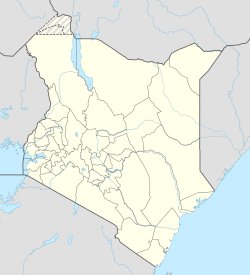 | |
| Dates | 9 February 2003 – 23 March 2003 |
|---|---|
| Administrator | International Cricket Council |
| Cricket format | One Day International |
| Tournament format(s) | Round-robin and Knockout |
| Hosts |
|
| Champions | |
| Runners-up | |
| Participants | 14 |
| Matches | 54 |
| Attendance | 626,845 (11,608 per match) |
| Player of the series | |
| Most runs | |
| Most wickets | |
The 2003 ICC Cricket World Cup was the eighth Cricket World Cup, organised by the International Cricket Council (ICC). It was co-hosted by South Africa, Zimbabwe and Kenya from 9 February to 23 March 2003. This edition of the World Cup was the first to be played in Africa. The tournament featured 14 teams, the largest number in the World Cup's history at the time, playing a total of 54 matches. It followed the format introduced in the 1999 Cricket World Cup, with the teams divided into two groups, and the top three in each group qualifying for the Super Sixes stage.
Contents
- Teams and squads
- Host cities and venues
- Match officials
- Pool stage
- Pool A
- Pool B
- Super Sixes
- Knockout stage
- Bracket
- Semi-finals
- Final
- Statistics
- Leading run scorers
- Leading wicket takers
- Controversies
- Security issues in Zimbabwe and Kenya
- Shane Warne's drug test
- References
- External links
The tournament saw numerous upsets, with South Africa, Pakistan, West Indies and England all being eliminated at the group stage (South Africa missed by 1 run after misreading the Duckworth-Lewis method rules). [1] England forfeited their match with Zimbabwe, due to the political unrest in the country, which ultimately enabled that team to reach the Super Sixes. Similarly, New Zealand forfeited their match with Kenya, due to security reasons which enabled the latter to reach the semi-finals, the only non-Test playing nation to do so. Another shock wave came two days after the tournament had started, when Shane Warne, at the time one of the game's leading spinners, was sent home in disgrace after testing positive for a banned substance. [2]
The tournament was eventually won by Australia who won all 11 of their matches, beating India in the final played at the Wanderers Stadium in Johannesburg. [3] This was Australia's third World Cup win, the only team to do so. Pakistani player Shoaib Akhtar also set a world record, becoming the fastest bowler in the history of cricket, delivering a record top speed of 161.3 km/h (100.23 mph) in a pool match against England. [4] [5] [6]



